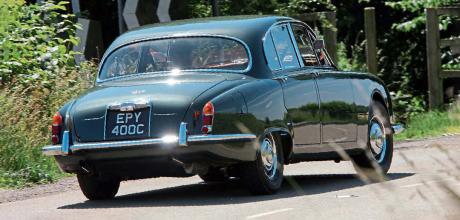1965 Jaguar S-Type 3.4 Manual
We drive a 58-year-old Jaguar S-Type that has averaged less than 600 miles a year to discover whether it feels and performs as well as its mileage suggests.
WORDS & PHOTOGRAPHY ROB HAWKINS
Long Lasting S-TYPE
This classic 1965 Jaguar S-Type 3.4 Manual has covered just 600 miles in its 58 years and boasts the rare manual overdrive box too.
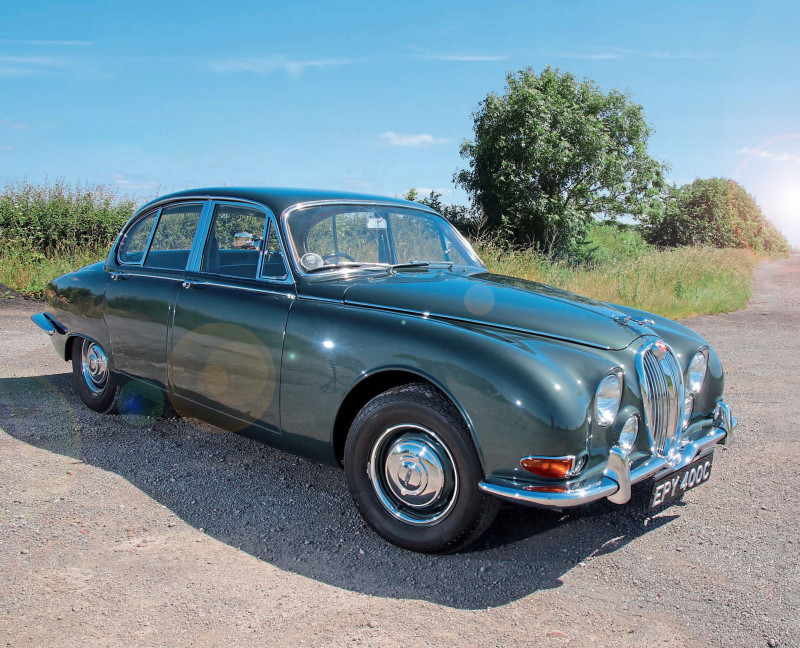
Finding a genuine low-mileage classic Jaguar that has not only been preserved, but routinely maintained is not as easy as it sounds. Barn-find examples invariably have numerous issues concerning perished rubber components, fuel blockages and trouble associated with neglectful maintenance.
Ideally, what you need is a car that has been serviced and MoT tested every year, and repaired when required, but hasn’t clocked up excessive mileage. Not much to ask for, but perhaps the S-Type seen here is a lucky find. Registered in September 1965, the first owner of the S-Type 3.4 S seen here lived in Scarborough, North Yorkshire. The car remained with its owner until he died and was sold in November 1973, with a mere 20,342 miles on the clock, to a Yorkshire farmer who already had nine other Jaguars.
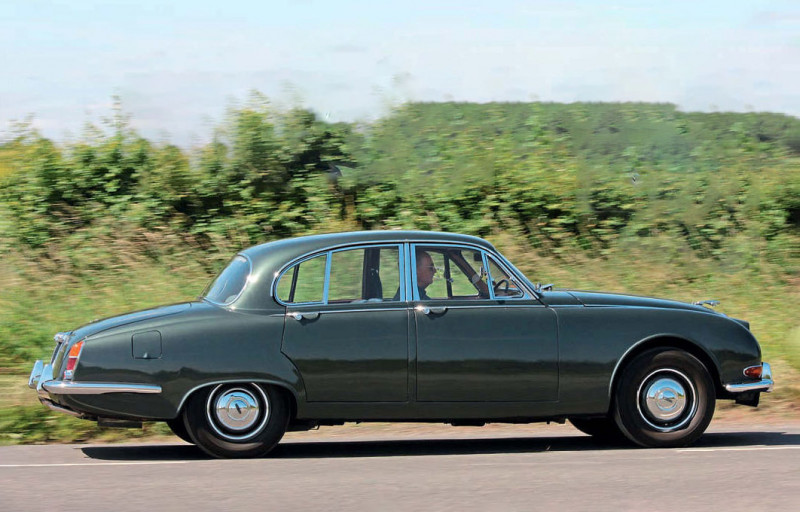
Giles is happy to live with his S-Type in its preserved condition
When this second owner died some 24 years later in 1997, he left the car to his daughter. Auctioneer Bonhams sold it in November 2009 when it had 29,170 miles recorded. Various traders seem to have owned it for the following five years until the current owner, Giles Bloomer, spotted it for sale at independent Jaguar specialist and classic car dealer, Tasker & Lacy, back in May 2015, then showing 30,540 miles – only 1370 more since it was sold by Bonhams.
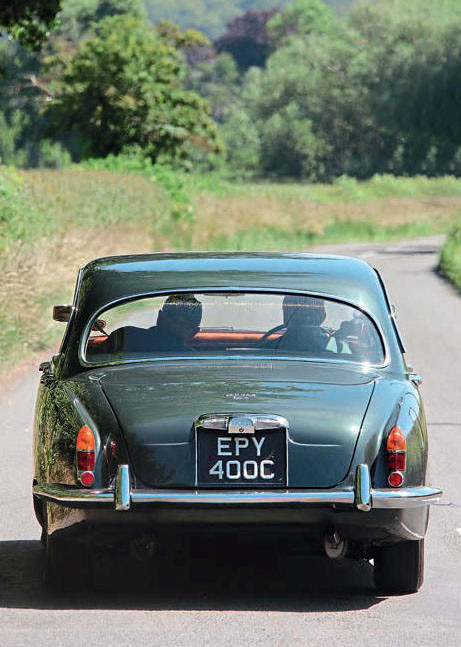
“This S-Type is my first ever Jaguar,” says Giles, “which I chose as being half the price of a Mk2, and with a better specification (independent rear suspension and inboard discs as per the E-Type) for a quiet and comfortable ride, which is what this ageing man and his wife were looking for!”
Surprisingly, the S-Type, which was launched in October 1963 as a smaller and cheaper alternative to the MkX, was never intended to compete with the Mk2, but is nowadays regarded as the underdog despite it having a superior rear suspension set-up, better interior heating and more room. It also came equipped with disc brakes all round from the start and a choice of 3.4 or 3.8-litre XK engines, whereas although the Mk2 featured the same components, it was also available with the wheezy 2.4-litre XK engine.
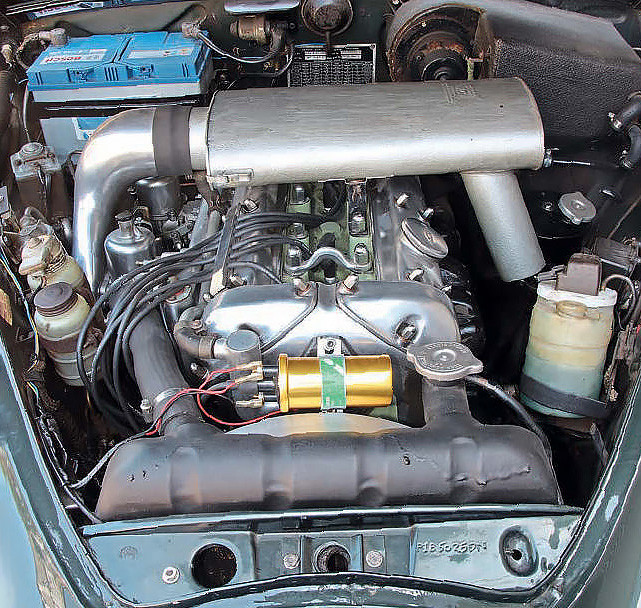
The Mk2 outlived the S-Type by four months, with the S-Type ceasing production at the end of 1968 after 24,993 of them had been made, whereas the Mk2 finished in April the following year (by then, it was called the 240 and 340, denoting its 2.4 or 3.4-litre engine).
In the flesh and from our photographs of this S-Type, it probably looks like a long vehicle, but appearances can be deceptive. At 4.75m (15ft 7in) from end-to-end,it’s shorter than a modern S-Type. Plus, it’s only 20cm longer than a Mk2.
Regardless of those official dimensions, sitting behind the steering wheel the external proportions of this S-Type don’t feel daunting. What does make me feel a little nervous is the fact that I’ve just convinced the car’s owner, Giles Bloomer, to let me drive it.

I naturally take it easy, but soon become aware of how refined and smooth this car is to drive. Even the gearchanges are slick and smooth from the Jaguar four-speed manual box. Unlike the earlier Moss gearbox fitted to the S-Type until October 1964, there’s synchromesh in all gears, whereas the Moss box had no synchromesh in first, so it required some mechanical sympathy to select and proper skill to select if the car is moving.
Finding an S-Type with a manual gearbox is quite a challenge because most cars that are now for sale are equipped with either a BorgWarner DG automatic or later Type 35 (fitted from 1967 onwards). Finding one with not only a manual box but also an overdrive is top of the list for many owners; that and low mileage, spotless paintwork and a leak-free engine. The list can go on.
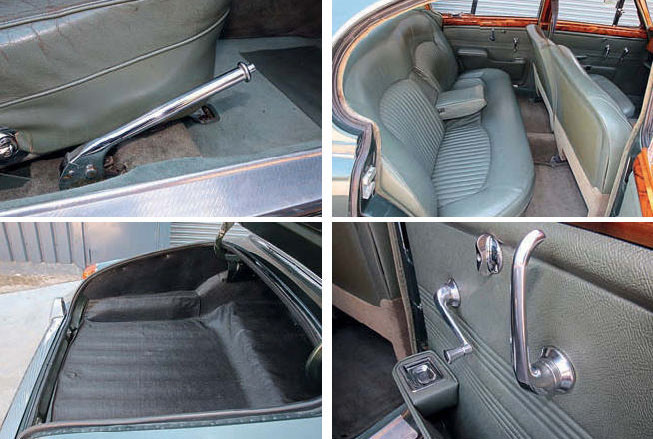
Whilst there has been some paint rectification to the exterior, it’s hard to tell whether a full respray has ever been completed or not. Being a steel monocoque construction, replacement panels have generally always been available and many are shared between the Mk2 and Daimler V8.
However, that’s not to say repairs are cheap; there’s not much change from £5000 for a replacement front wing and if you followed our Classic Workshop in the January 2022 issue of JW, you’ll know how time-consuming and complicated it is to replace the mounting sections for the rear leaf springs.
Giles says that he hasn’t got hard evidence to prove his car’s low mileage and seemingly original components, but both he and independent specialist Ken Jenkins cannot see any reasons to doubt it, judging by the condition of the paintwork, interior trim and even the engine.
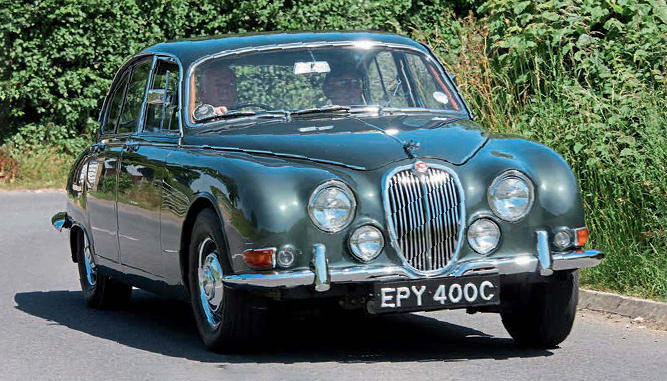
As we head to Ken Jenkins’ workshop, where we initially met, I can’t believe I never considered buying an S-Type as a classic Jaguar, dreaming instead ofamore expensive Mk2. The manual gearbox with overdrive is the perfect combination in my opinion, and although the 3.4-litre engine isn’t as punchy as the larger 3.8, it’s sufficiently lively and doesn’t leave me standing on the throttle pedal, waiting for the twin cam to respond.
The ride quality of this particular example is superb, thanks partly to the suspension, which consists of upper and lower wishbones with coil springs and telescopic dampers at each front corner, and an independent set-up at the rear comprising lower arms, radius arms, coil-overs and each driveshaft doubling up as the upper suspension arm (similar in design to the MkX and E-type but unique in dimensions to the S-Type, so they are not interchangeable).
This arrangement of suspension components marked the way forward in the Sixties, helping to establish Jaguar’s reputation for producing cars with a luxurious, floating-on-air ride quality. It was also during an era when many small cars leapt forwards in suspension design, notably the BMC Hydrolastic floating-on-fluid suspension systems. Torsion bars and leaf springs, as fitted to the MkIX and earlier models of the Fifties, were now dated and fast becoming obsolete, although the Mk2 managed to hang on to its leaf springs.
The steering on this S-Type feels precise and sufficiently positive, which consists of power assistance from a Hoburn Eaton pump to a Burman steering box. Perhaps the choice of tyres helps, which in this case are retro-looking radials from Vredestein’s Sprint Classic range — the S-Type was equipped with Dunlop RS5 (640 H15) cross-ply tyres until June 1964 when they were changed to Dunlop SP41 radials.
There are no complaints from the servo-assisted disc brakes, which scrub off the 50mph or so I dare to stretch to whilst Giles is sat next to me. He later confesses, “At 70mph on a motorway in overdrive, apart from a bit more wind noise, it is really not very much different from my six-year-old daily-driver BMW 5-Series.”
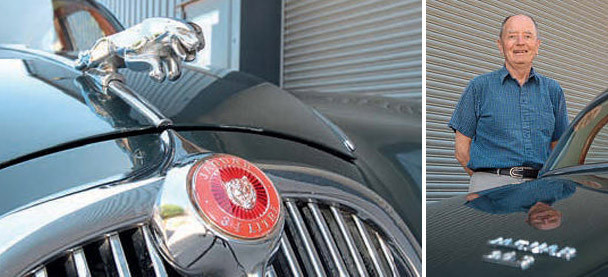
In fact, Giles isn’t reluctant to drive this S-Type, having been to the Channel Isles, up north to Holy Island and even further north to Dumfries. Consequently, there’snow roughly an additional 4000 miles on the odometer, but more importantly, this S-Type is being properly looked after.
Before Giles decided to buy it, he asked Ken Jenkins to check it over at Tasker& Lacy. And over the last eight years, a few jobs have arisen that have helped to preserve it. For instance, the engine was removed and stripped in 2015, extracting the core plugs. “The core plugs were removed to allow us to steam clean the water passages in the block,” explains Ken Jenkins. “New C315 core plugs were fitted using Araldite to ensure that they do not leak or blow out.”
Having inspected the condition of the crankshaft and its main bearings (cap side), Ken recalls, “We did not have to remove the crank from the engine block, the bearings were in excellent condition, and I decided to leave them alone. The original asbestos rope seal was still in place and not leaking, so we left it. The big end split pins were removed and replaced with the later Jaguar 12-point lock nuts. If the old pins wear and fall out, they can damage the oil pump — the big end nuts are tightened to 37lb.ft.”
As a precaution when refitting the engine and gearbox, the clutch was replaced, the overdrive unit was reconditioned and the coolant radiator was re-cored. Other jobs that have been completed under Giles’ ownership include replacing the universal joints for the rear driveshafts, some exterior paint rectification and new wiring behind the dashboard in a bid to fix an intermittent misfire of the engine. This last problem hasn’t been straightforward to fix and still reoccurs, as Ken explains: “The original wiring was brittle behind the centre dashboard, so the ignition could be turned off and on by tilting the dashboard. The current issue is only present when cold when there is a drop in ignition voltage. The ignition switch could be the culprit.”
Aside from the expected maintenance and typical issues relating to a classic car, there are so many aspects of this S-Type that seem to be well preserved and don’t need to be messed with. Inside, the leather upholstery, particularly the rear seats, look as though they have hardly been sat upon. An interior of this standard can easily cost around £6000 to source new, particularly if the dashboard needs restoring.
And thankfully, this age of S-Type means the upholstery is leather and the interior trim contains plenty of wood and chrome, unlike those from August 1967 onwards, which were subjected to cost-cutting options, such as Ambla vinyl (imitation leather) and the onslaught of plastic.
At the moment, Giles is happy to live with his S-Type in its preserved condition. The electrics still employ the original positive earth layout and the dynamo has a rear pulley to drive the aforementioned Hoburn Eaton steering pump. Consequently, if Giles wishes to convert to negative earth and fit an alternator, be d need to have the power steering modified, but at present, he has no plans to change any of this.
He even likes the non-conventional features, such as the handbrake being positioned to the right of the driver, between the seat and the door. «I like the handbrake being on the right,» he comments. «It means you can use the central armrests and it gives a nice layout to the gearchange console. The red warning light [on the dashboard] is very clever for such an old car. You have to make sure that it is fully off — if you inadvertently leave it one notch up, which is easily done, the light doesn't go out.»
This S-Type will hopefully continue to remain as pristine and pampered as it needs to be for future prosperity so that its low mileage and originality can still appeal. Its a tall order for a classic: that's fast approaching 60 years old.


